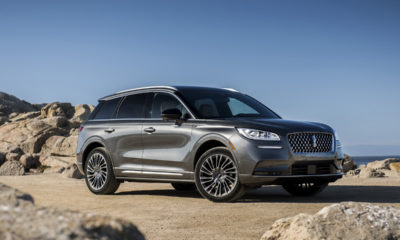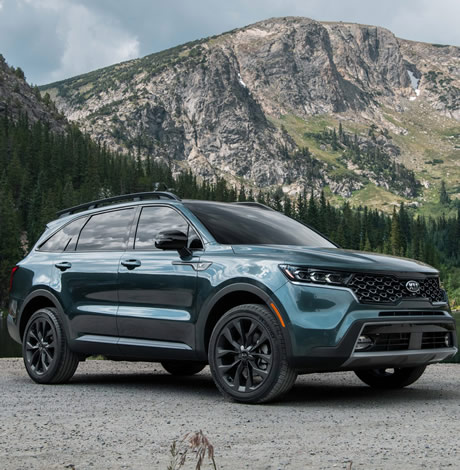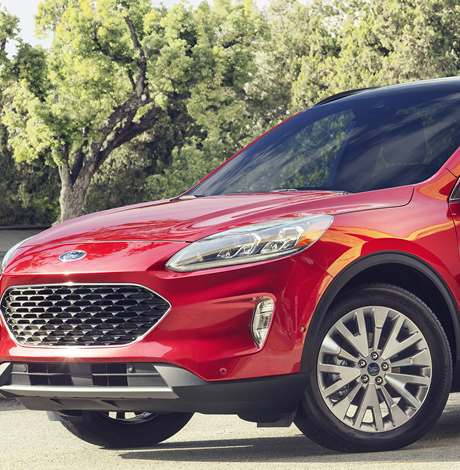Autos
Hip hybrids: Ford Escape, Kia Sorento, Lincoln Corsair
These rides have the lowest lifetime maintenance costs
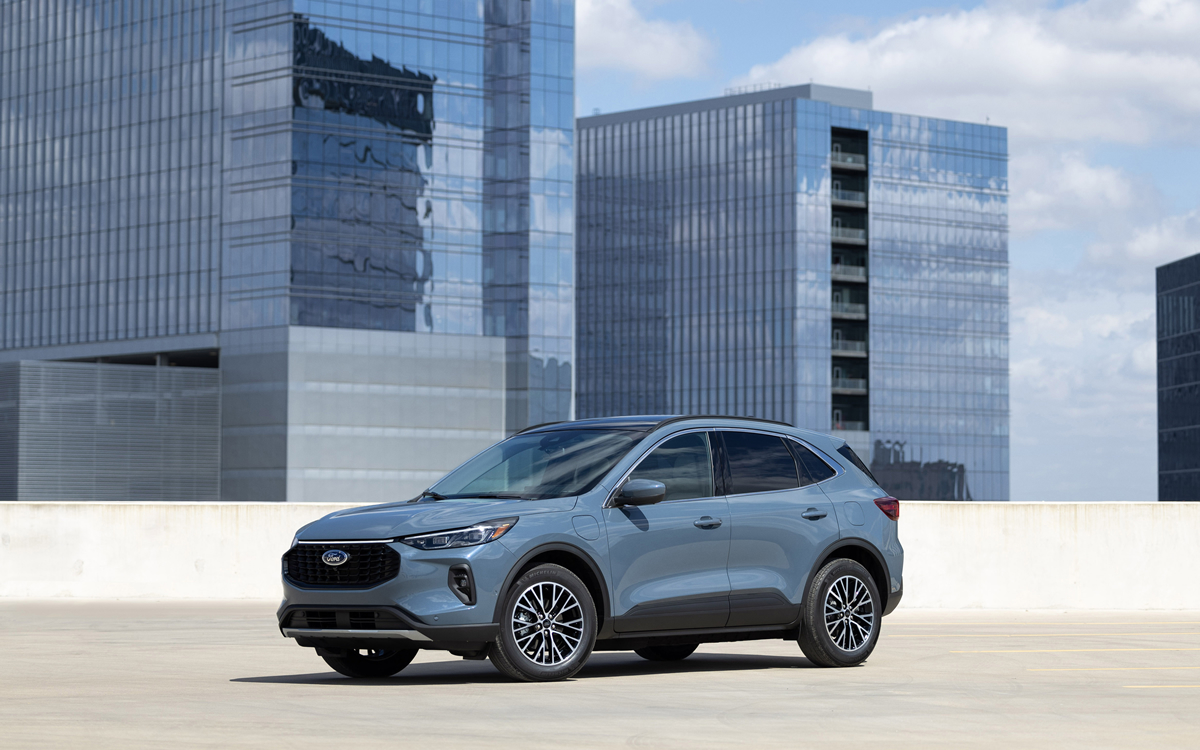
How cool are hybrids? Let us count the ways.
First, hybrids aren’t fully electric, so there’s no range anxiety about your battery conking out during a trip. Second, sticker prices are lower for hybrids than for electric vehicles. Third, hybrids—especially plug-in hybrids like those reviewed here—have the lowest lifetime maintenance costs.
And, oh yes, hybrids also boast a hoity-toity lineage: The first hybrid, the Mixte, was built in 1902 by Ferdinand Porsche.
FORD ESCAPE PLUG-IN HYBRID
$41,000
MPG: 40 city/40 highway
Electric-only range: 37 miles
0 to 60 mph: 7.7 seconds
PROS: Refreshed design, good fuel economy, roomy.
CONS: Some cheap interior plastics, no ventilated seats, no all-wheel drive.
IN A NUTSHELL: The Ford Escape plug-in hybrid is $13,000 less than its luxe sibling, the Lincoln Corsair. But cheaper doesn’t mean lackluster. Exterior styling on an Escape is snazzy, with tasteful LED accent lighting stretching across the top of the grille. Handling is highly responsive, as are the brakes. And there’s plenty of zip when driving in all-electric mode. Ford says this Escape can go 37 miles on battery power alone, but for me it was even better—up to 40 miles. Other nice surprises: a hushed cabin and crystal-clear stereo. There’s only one trim level, but it’s loaded: heated seats, heated steering wheel, dual-zone climate control, tinted rear windows, nav system and more. My test vehicle also came with many sweet options: head-up display, 360-degree split-screen camera, panoramic roof and active park assist. Overall, the Escape may not be as fully upscale as a Lincoln Corsair, but it’s pretty close.
KIA SORENTO PLUG-IN HYBRID
$54,000
MPG: 35 city/33 highway
Electric-only range: 32 miles
0 to 60 mph: 7.9 seconds
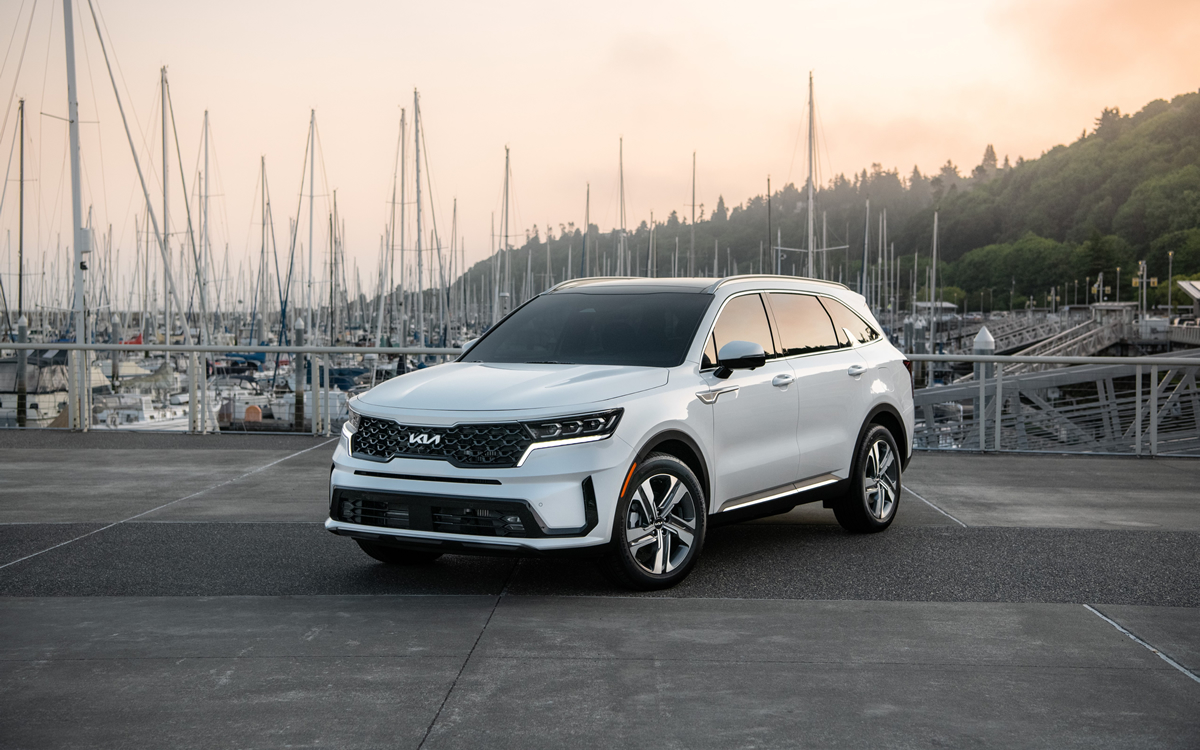
PROS: Fuel efficient, easy to drive, third-row seating.
CONS: Not so sporty, low towing capacity, third row for kids only.
IN A NUTSHELL: Need a larger hauler? The Kia Sorento plug-in hybrid is the most affordable midsize crossovers with third-row seating. A tad slower and less sporty than various competitors, this Kia is still one smooth ride. It felt especially steady as I was weaving through stop-and-go Beltway congestion after some unexpectedly long days at work. In fact, not once did I swear like a New York City cab driver under my breath. What’s more, there’s plenty of bang for the buck: remote keyless entry, hands-free power liftgate, LED interior lighting, second-row sunshades, 12-speaker premium Bose stereo and other goodies. The seating features alone are impressive: heated/ventilated front seats, heated second-row seats, 14-way power-adjustable driver’s seat, 10-way front passenger seat, second-row captain chairs, and 50/50-split folding third-row seat. There are so many safety systems that even Volvo—renowned for its safety innovations—would likely be impressed. I know I was.
LINCOLN CORSAIR PLUG-IN HYBRID
$54,000
MPG: 34 city/32 highway
Electric-only range: 28 miles
0 to 60 mph: 7.0 seconds
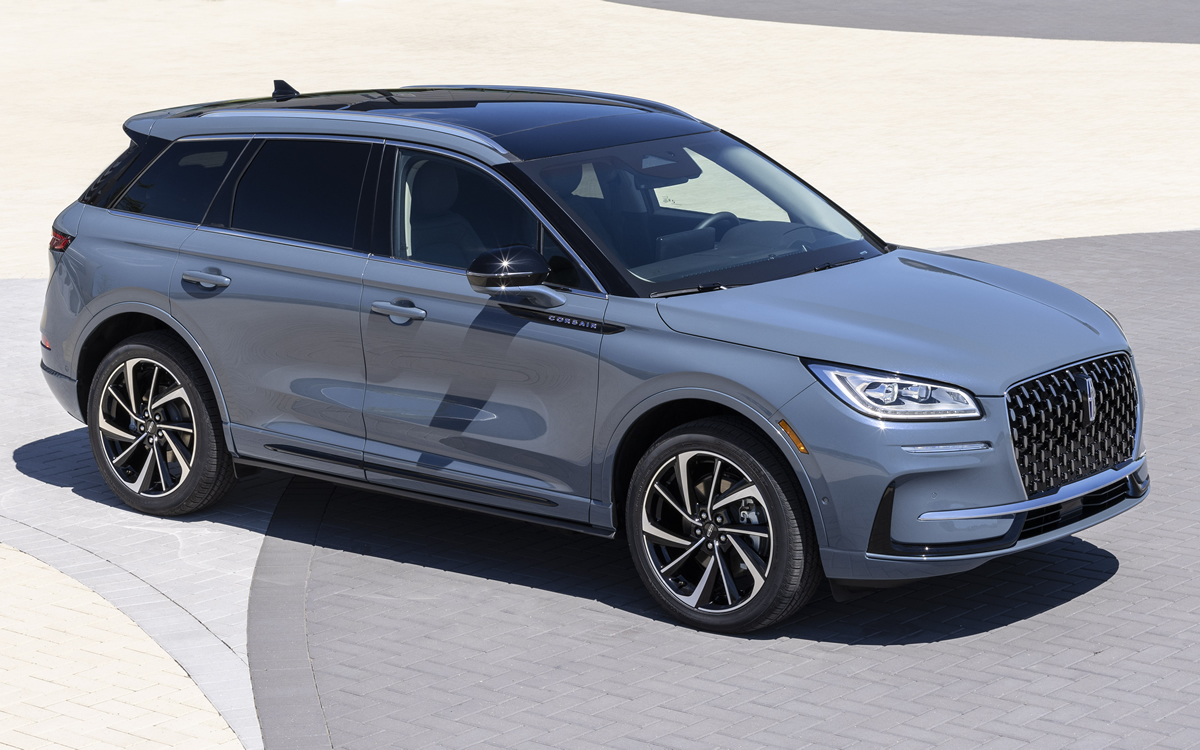
PROS: Glitzy outside, cushy inside, creature comforts galore.
CONS: Pricey, some touchscreen anomalies, battery-only range not so far.
IN A NUTSHELL: As with various other hybrid crossovers, the Lincoln Corsair plug-in is only available in one high-end trim level. Built on the same platform as the less expensive Ford Escape, the Corsair is the better choice for drivers itching for a refined ride. Handling is comparable to a Lexus sedan versus a BMW speedster, though the Corsair is notably faster than an Escape. The Corsair also has a swanky cabin with primo materials. Two new interior colors say it all: Smoked Truffle and Eternal Red. The dash flaunts two large display monitors: 12.3-inch digital gauge cluster and 13.2-inch infotainment touchscreen (note that a few navigation features were less-than-intuitive at first). Nifty amenities include massaging seats, hands-free liftgate, automated parking system and limited hands-free driving. While overall car sales were down last year, sales of EVs and plug-in hybrids were up. These three fuel-friendly rides help explain why.
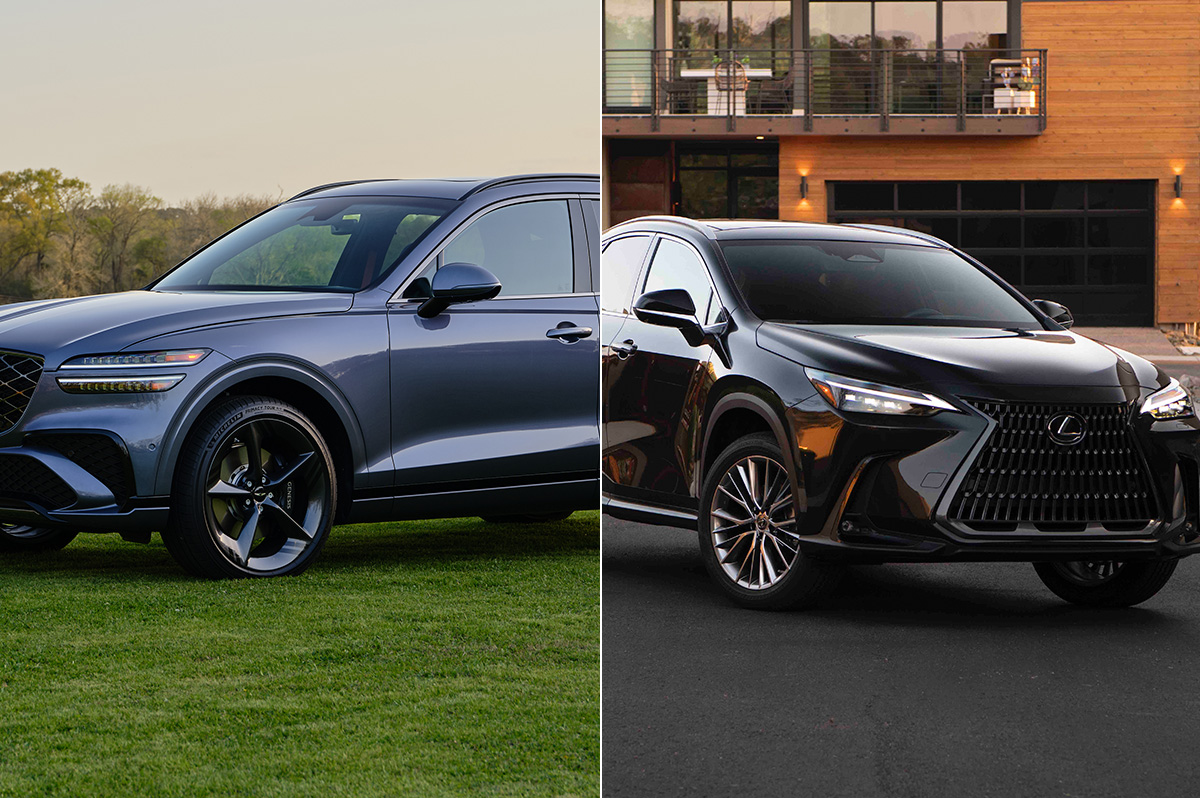
In this corner, there’s the Genesis QV70, newly updated and full of glitzy gizmos. And in the opposing corner, there’s the Lexus NX, a fan fave known for comfort and reliability.
Both are strong contenders. Both have proven to be equally adept at bobbing and weaving through traffic. And both can go toe to toe with pricier competitors.
And yet, what would happen when they sparred against each other? Here’s your ringside seat to find out.
GENESIS QV70
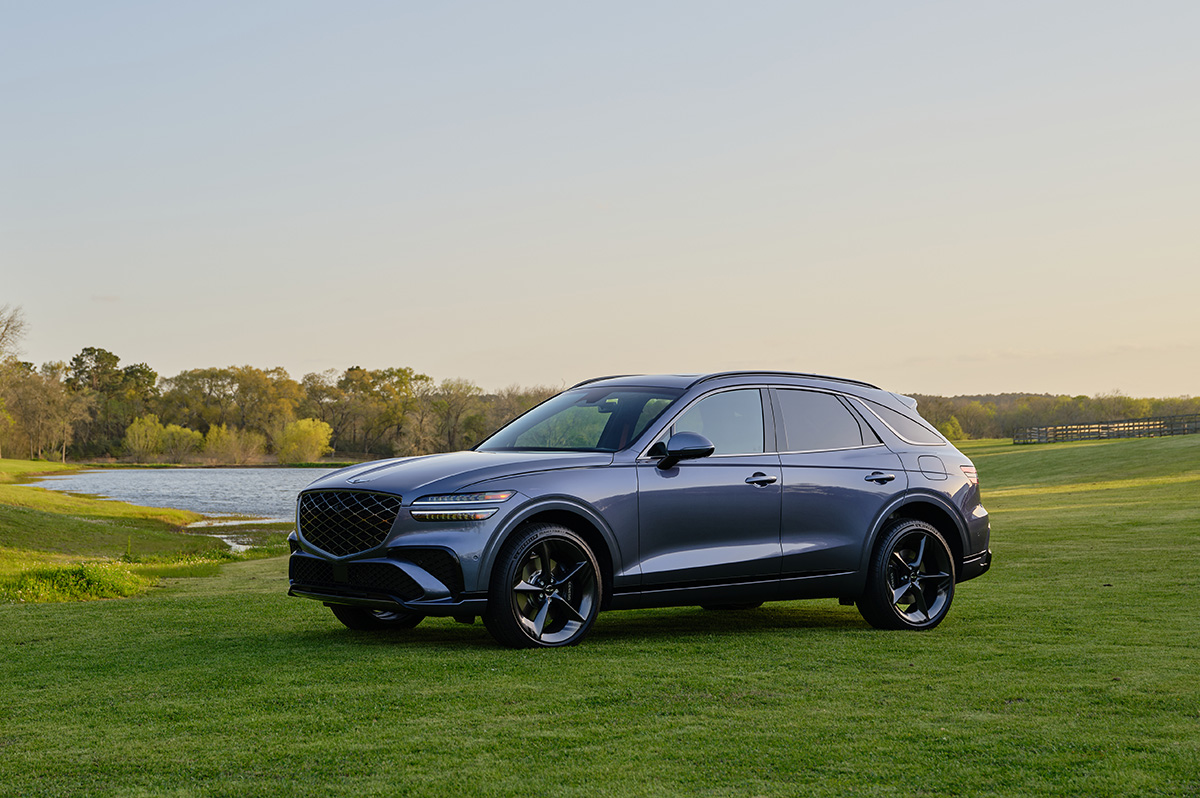
$50,000
MPG: 22 city/28 highway
0 to 60 mph: 5.9 seconds
Cargo space: 28.9 cu. ft.
PROS: Stylish. Good value. Lots of standard amenities.
CONS: So-so fuel economy. Quirky dash controls.
IN A NUTSHELL: When it comes to speed, the Genesis QV70 is faster on its feet than the Lexus NX. Neither of these crossover SUVs is a lightweight, but the QV70 offers more potent powerplants—including an all-electric version that zips from 0 to 60 mph in just 3.8 seconds. In other words, Porsche Macan S territory.
The two gas-powered options—a four-cylinder turbo and twin-turbo V6—also got my blood pumping. So did the velvetlike suspension mixed with deft handling and stop-on-a-dime braking. But this adrenaline rush comes at a cost: sacrificing fuel economy.
As for the automaker’s design philosophy—“athletic elegance”—it’s on full display here: an oversized grille inspired by the Genesis emblem, the dramatically arcing silhouette, and those distinct quad headlights and taillights. It’s not easy to stand out when 25% of all vehicles sold in the U.S. are compact crossovers, so kudos to the QV70 for being such a head-turner.
The mod-yet-minimalist styling carries over to the cabin, with its high-quality materials: real-wood accents, soft-touch plastics and a tasteful glass shift knob. New this year is a sweeping 27-inch dashboard monitor, which houses the gauge cluster and infotainment touchscreen. Alas, this display is positioned a bit far from the driver (though I must admit reaching for it did help stretch a few tight back muscles).
Instead of being a costly extra, this gigantic monitor comes standard. So do synthetic leathers seats, nine-speaker stereo, smartphone/wireless connectivity, hands-free liftgate, tons of safety gear and more. Options include a panoramic sunroof, three-zone climate control, 16-speaker Bang & Olufsen audio, synthetic suede headliner, sound-reducing rear windows, automated parking and other goodies.
What’s the score so far? Despite some minor quibbles, the Genesis QV70 is a worthy challenger that pulls no punches.
LEXUS NX
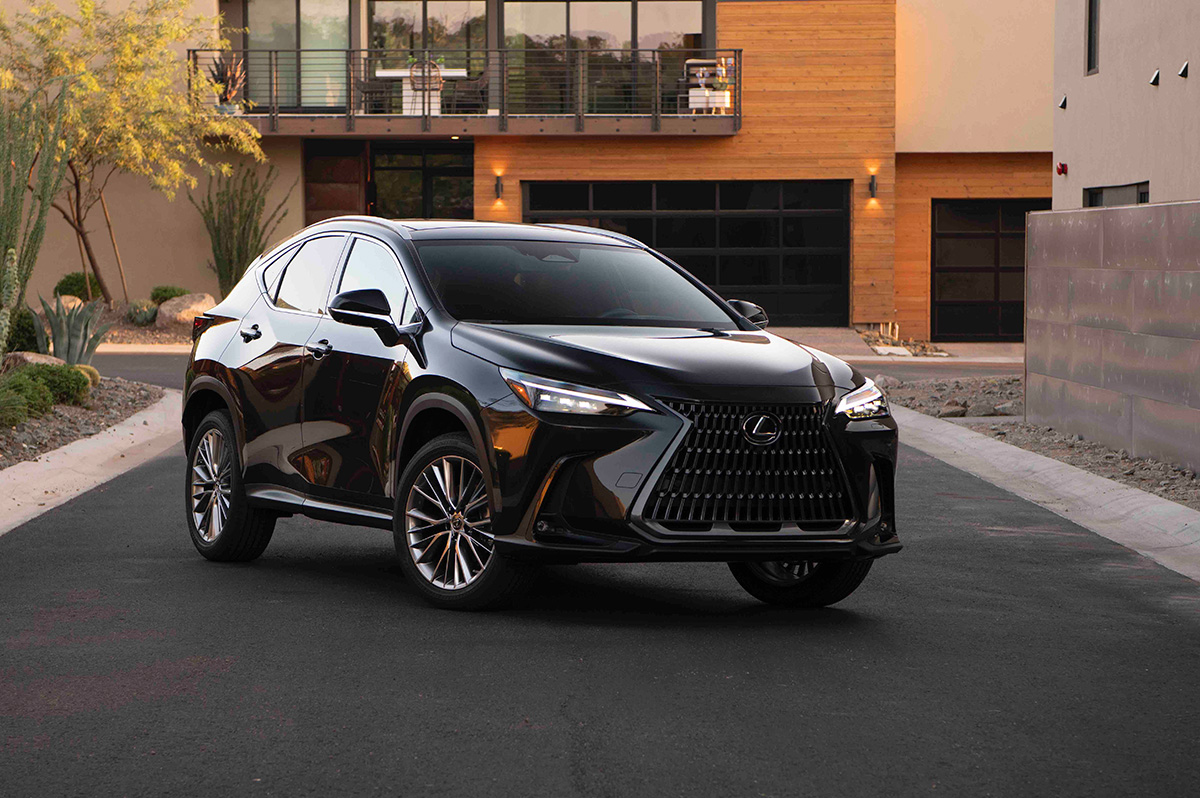
$43,000
MPG: 26 city/33 highway
0 to 60 mph: 8.2 seconds
Cargo space: 22.7 cu. ft.
PROS: Fuel efficient. Comfy seats. Rock-solid reliability.
CONS: Pokey base model. Limited rear storage.
IN A NUTSHELL: Sure, the Lexus NX isn’t as speedy as the Genesis QV70. But, as with the tortoise and the hare, sometimes slow and steady wins the race. And really, it’s only the entry-level NX that feels sluggish, such as when trying to quickly merge into freeway traffic.
Other trim levels, including two hybrid options, are just fine. And no matter the engine choice, the counterpunch here is that these vehicles get better gas mileage: 20% higher fuel economy than in either the four-cylinder or V6 in the Genesis. The two NX hybrids are even more green, with the high-end plug-in version able to travel up to 37 miles on electric power alone. One downside: There is no all-electric NX—well, at least not yet.
As with parent-company Toyota, Lexus offers stellar vehicle reliability—often ranked No. 1 in dependability and crash-test surveys year after year. Lexus vehicles generally hold their value better than Genesis, because this newer brand has a shorter history. Lexus also has a larger dealer network, though the number of Genesis dealerships is growing.
But when it comes to cargo space, the NX is about two inches shorter and narrower than the QV70, which has more stowage area. And Genesis handling is sportier, though the Lexus feels sure and well-grounded.
Luxe interior amenities are basically the same in both vehicles. But interior styling in the QV70 is trendy, while the NX is more understated. In other words, a choice between sassy and classy.
This is a very competitive vehicle segment, with Euro models like the Audi Q5, BMW X3 and Mercedes GLC also duking it out in what seems like a clash of the titans.
But as for the Genesis QX70 or Lexus NX, which is the winner? For me, both are real knockouts—so I’d call it a draw.
Autos
A cheeky convertible: Mercedes CLE 450
Riding the freeway of love with the top down and spirits up
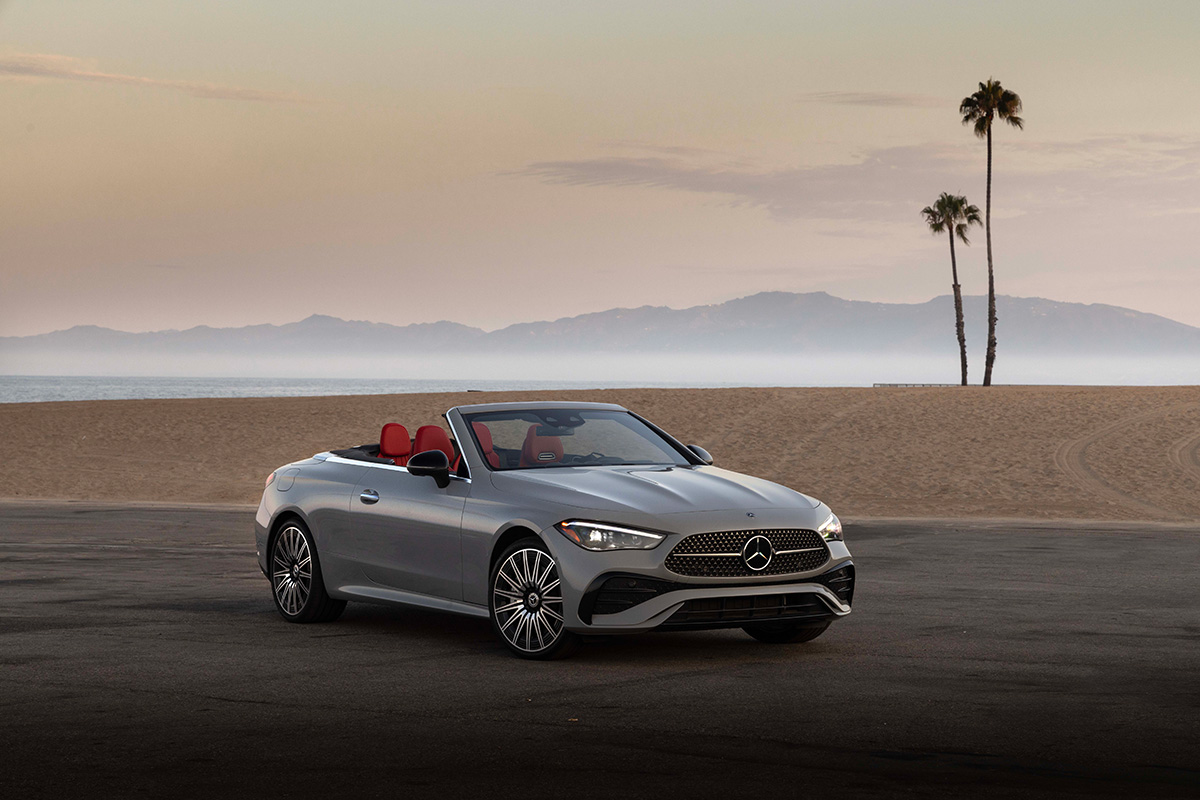
“Drop the top, baby!… Drop the pedal and go!”So croons Aretha Franklin in “Freeway of Love,” her classic song about a joyride in a pink Cadillac convertible.
Those free-spirited lyrics came to mind recently each time I got behind the wheel of an equally exquisite ride: the Mercedes CLE 450.
MERCEDES CLE 450 CONVERTIBLE
$76,000
MPG: 23 city/32 highway
0 to 60 mph: 4.2 seconds
Cargo space: 9.6 cu. ft.
PROS: Dreamy design. Divine handling. Dazzling amenities.
CONS: Cramped cargo area. Kinda impractical for everyday driving.
IN A NUTSHELL: Who needs two fine open-top chariots when one fabulous convertible will do? That seems to be the thinking at Mercedes, which recently replaced two of its cabriolets—the compact C-Class and midsize E-Class—with the brand-new CLE 450.
While the wheelbase is a wee bit shorter than on the outgoing E-Class model, the CLE is longer overall than either of its two former siblings. The result: more legroom than expected, especially for anyone in the front seats. Even backseat occupants may feel comfy (OK, perhaps not Brittney Griner or Carl Nassib, but still…).
Alas, trunk space is slightly scrunched, thanks to the folding fabric roof. But that power-operated top—available in black, gray or red—can be raised and lowered with the car traveling at speeds up to 37 mph. And the triple-layer acoustic material provides excellent insulation and greatly reduces outside noise. In fact, I often had to remind myself this was the CLE convertible and not the hardtop coupe.
There’s also a wind-deflector apparatus that, when activated, elevates airflow off the windshield and reduces backflow with a rear mesh screen. For added pampering, an AIRSCARF system lives up to its name, sending warm air onto the necks of front-seat passengers. (Don’t tell my husband, but I felt like an invisible suitor was wooing me, seductively blowing kisses my way.)
Convertibles usually are not as structurally rigid as their hardtop counterparts. But here again, Mercedes works its magic: The chassis—made of aluminum and high-strength steel—is so incredibly stiff that there’s absolutely no shake and shimmy. This solid body structure also provides for a safe vehicle shell.
Under the hood, there’s a spirited 375-hp turbo engine, augmented by grippy all-wheel drive and a graceful nine-speed automatic transmission. As a crazed soccer fan, I think it’s not too much of a stretch to say the driving experience combines the speed, sass and savvy of a star athlete (think Megan Rapinoe).
Inside, there are plenty of premium styling cues, as well a glitzy dashboard with 12.3-inch digital cluster and 11.9-inch multimedia touchscreen. Yes, the CLE borrows heavily from the C-Class and E-Class. But somehow—perhaps because of the low ground clearance and multi-contour seats (which include heating, ventilation and massage functions)—this cabin feels and functions more like a true cockpit.
Along with all the driver-assistance features, there are 11 airbags (including rear head airbags), pop-up roll bars and a drowsy-driver alert monitor. In case of an impending crash, an accident-preparedness system immediately tightens seatbelts, adjusts seats and closes windows.
I could go on about all the amenities, including a 17-speaker Burmester surround-sound stereo, the 64-color ambient-lighting system and more. But why bother? This is a Mercedes, after all, so you expect such babying.
What wasn’t expected? How much I keep missing this beauty after my weeklong test drive ended. It’s not as if soft-tops are practical, like minivans and SUVs. And two-door rides—coupes or cabrios—now account for less than 4% of all new-vehicle sales.
But Aretha would have understood. Classy convertibles, like her pink Caddy and the Mercedes CLE 450, represent open-air freedom and the promise of adventure.
“So jump in, it ain’t no sin. Take a ride in my machine.”
Autos
Sporty sedans: BMW 530i xDrive, Mercedes AMG CLA 3
Tariffs are here and the result is financial chaos
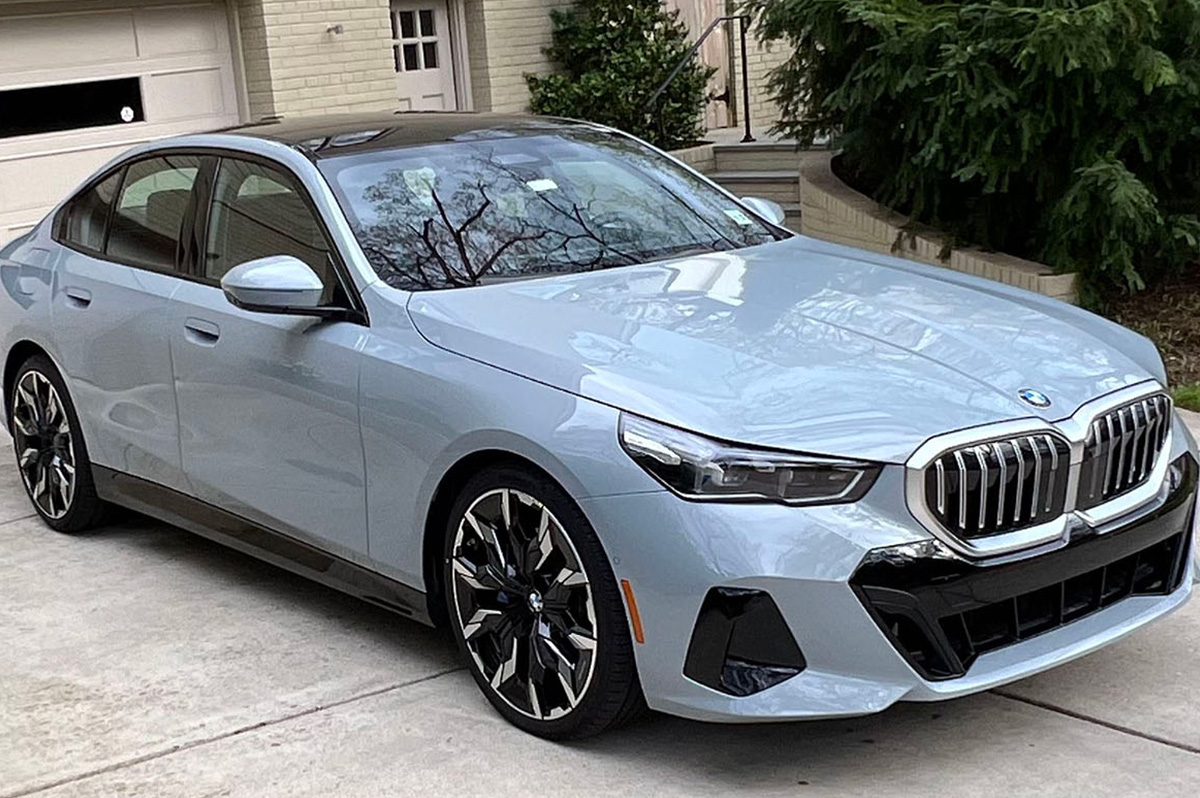
It’s official: Tariffs are here, and the result is financial chaos.
So, what to do when purchasing a new vehicle? If you need one in the not-so-distant future, buy sooner (like yesterday) rather than later. Expect prices to rise quickly, as inventory dwindles, demand soars, and automaker incentives evaporate. Of course, if a new ride isn’t a priority for at least a year or three, then hold off until the dust settles.
But for those of you looking for new wheels now, I recently drove two sport sedans that were a pleasant reprieve from the usual plethora of pickups, minivans, and SUVs.
BMW 530i xDRIVE
$63,000
MPG: 28 city/35 highway
0 to 60 mph: 5.5 seconds
Cargo space: 18.4 cu. ft.
PROS: Rakish looks. Race-car vibe. Rock-star amenities.
CONS: Rad-but-quirky infotainment system. Rich price.
IN A NUTSHELL: Classic good looks, from the iconic grille and swept-back headlights to chiseled side panels and a tasteful tush. For a gearhead like me, the BMW 530i xDrive — completely redesigned last year — is as rapturous as Michelangelo’s David. Everything here is in proportion, from the design to the drivetrain, which — along with a gutsy 255-hp turbo and all-wheel drive — helps deliver a divine experience behind the wheel. Even better, my test car came equipped with the heavenly M-Sport Package: 21-inch wheels, athletic suspension, and assorted styling upgrades.
A tech-laden cabin is outfitted with a sparkly 12.3-inch digital instrument cluster and 14.9-inch touchscreen infotainment system. With the windshield head-up display and a slew of knobs and toggle switches in the center console and on the steering wheel, I wondered if this is how it feels to pilot the Space Shuttle. There is even a back-lit interaction bar with touch-sensitive controls to adjust vent direction and other climate control settings.
All this gadgetry takes some getting used to, but the overall effect is dazzling. While a 12-speaker Harman Kardon stereo comes standard, I was jammin’ to the 16-speaker Bowers & Wilkins premium audio. Of course, such options add up quickly (on my test car, the extras totaled $13,000).
Just how fun is this car? In my favorite episode of “Hacks,” sassy Jean Smart drives a rockin’ Rolls Royce Wraith. Trust me, this four-door BMW is every bit the badass as that $300,000 super coupe.
MERCEDES AMG CLA 35
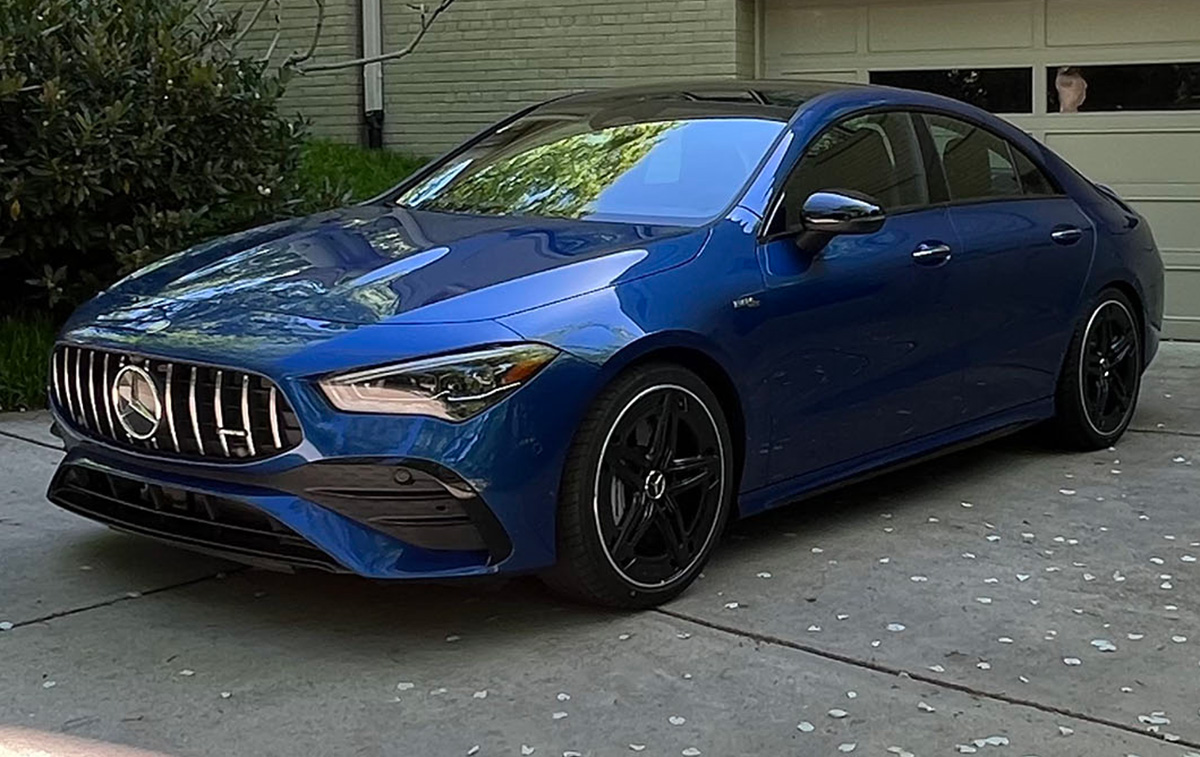
$58,000
MPG: 22 city/29 highway
0 to 60 mph: 4.8 seconds
Cargo space: 11.6 cu. ft.
PROS: Slick styling. Spiffy cabin. Sublime seats.
CONS: Smallish trunk. So-so rear headroom and legroom.
IN A NUTSHELL: Need a smaller sedan that’s just as marvy as the midsize BMW i530? Look no further than the compact Mercedes CLA-Class, which is 14 inches shorter. That’s a benefit when jockeying for parking or navigating rush hour.
Another plus: This is Mercedes’s least expensive sedan, available in three trim levels. All come with the same potent turbo but in varying power levels. The base model starts at $46,000, but I tested the first of two high-performance versions: the AMG CLA 35, which costs $12,000 more. You can open your wallet even further to snag the $67,000 AMG CLA 45.
But why bother? The AMG CLA 35 is plenty quick — faster than the BMW i530 — and boasts sport-tuned brakes, deft handling and a gritty-sounding exhaust system. The laundry list of standard features includes all-wheel drive, automated parking, gobs of the latest safety gizmos and even something called “safe-exit assist,” which prevents passengers from opening a door into traffic or speeding cyclists.
The interior is pure Mercedes, with top-notch materials, customizable ambient lighting and Burmester surround-sound audio. The overall layout—sleek and modern, but with elegant stitching in the seats and on the door panels and dashboard—is comfortable and user-friendly. Digital displays and touchscreens are similar to what’s in the BMW i530, just smaller.
Size matters, of course, which is why this vehicle’s shorter length can be a blessing but also a curse, especially when trying to squeeze passengers with longer legs into the backseats. And the dramatically sloped roofline, attractive from the outside, limits the amount of rear headroom and cargo space. Thank the automotive gods for panoramic sunroofs, which—at least for anyone in the front seats—makes this cabin feel surprisingly spacious.

